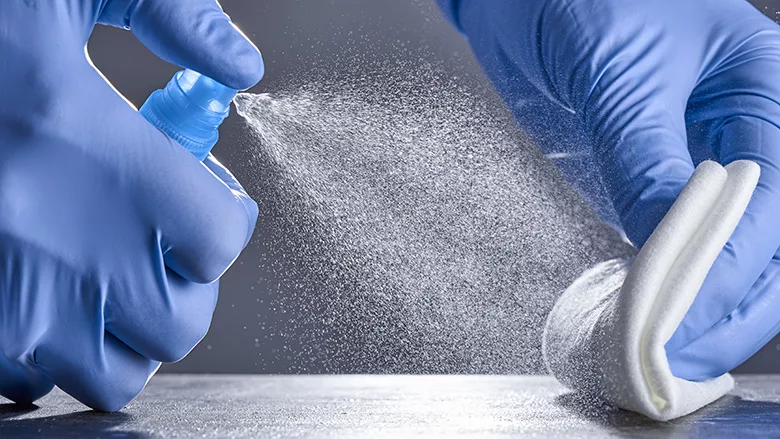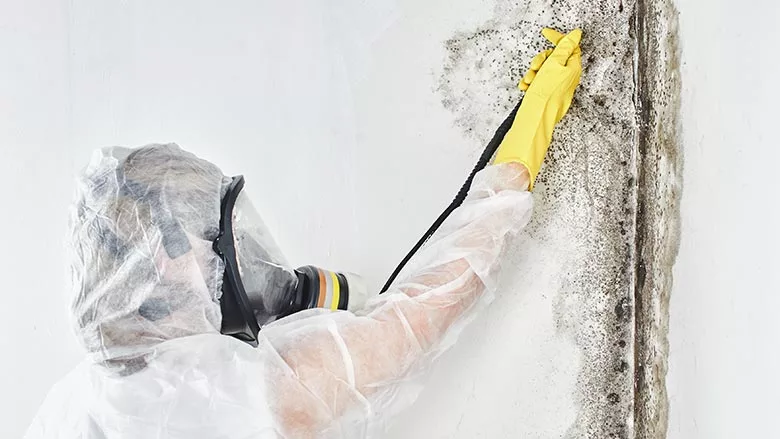Understanding EPA Master Labels and Registration Numbers

Photo credit: alexx60 / iStock via Getty Images Plus
When you think of disinfectants, you might picture a brightly labeled bottle claiming to kill 99.9% of germs, promising safety and cleanliness with every spritz. But if you’re relying solely on marketing claims to choose your disinfectants, you could be making a big mistake.
The true power of a disinfectant lies not in its advertising but in its EPA master label. This label, backed by rigorous scientific testing, is the ultimate guide to understanding a disinfectant’s capabilities, limitations, and proper usage. In this article, we’ll decode the master label, discuss the significance of EPA registration numbers versus EPA device numbers, and give you the tools to make informed decisions about the products you use.
What Is the EPA Master Label, and Why Does It Matter?
The EPA master label is a legally binding document that defines exactly what a disinfectant can do, how it should be used, and under what conditions it’s effective. When manufacturers submit a disinfectant for EPA registration, they must provide data demonstrating efficacy, stability, and safety. The EPA reviews this data to ensure the product meets stringent standards before it can be sold or marketed in the United States.
Start with the First Page: What’s Inside the Bottle?
The first page of the EPA master label reveals critical information:
- Active Ingredients: This tells you the chemical compounds responsible for killing pathogens. For example, hypochlorous acid (HOCI) and quaternary ammonium compounds are common active ingredients, each with unique strengths and limitations.
- Concentration: This specifies the percentage of active ingredients. Higher concentrations often mean more potent products, but they can also indicate greater corrosiveness or pose greater safety risks.
- Stability Information: Some disinfectants degrade over time. The label may indicate whether the product needs to be used within a specific time frame after opening or mixing. For example, a disinfectant might lose effectiveness 30 days after dilution, making it critical to track usage dates.
Instructions for Use: A Step-by-Step Guide
The next section of the master label provides detailed instructions for use, including:
- Dilution Ratios: How to mix the product correctly (if dilution is required).
- Application Methods: Whether the product should be sprayed, wiped, or fogged.
- Dwell Times: How long the surface must remain wet for the disinfectant to work.
Skipping these instructions or cutting corners can render a disinfectant ineffective or even unsafe.
Pathogen Claims and Contact Times: The Heart of the Label
The most critical section of the EPA master label is the list of pathogen claims and their corresponding contact times.
- Pathogen Claims: This lists the microorganisms the disinfectant can kill. Beware of impressively long lists—many companies pad their claims with multiple strains of the same organism. For instance, a product may list several strains of E. coli, but this doesn’t necessarily make it more powerful than one with a single E. coli claim.
- Contact Times: Shorter contact times generally mean a more efficient product. For example, a disinfectant that kills Clostridioides difficile (C. diff) spores in three minutes is far more practical than one that takes 10 minutes.
Understanding the Pathogen Hierarchy
Not all pathogens are equally difficult to kill. The EPA uses a pathogen hierarchy to classify microorganisms by how challenging they are to eliminate. Here’s the hierarchy, from easiest to hardest:
- Enveloped Viruses (e.g., influenza, COVID-19): The easiest to kill because their lipid envelope is fragile.
- Vegetative Bacteria (e.g., E. coli, Staphylococcus aureus): Relatively easy to kill.
- Fungi (e.g., mold, Candida albicans): Harder to kill due to their tougher structures.
- Mycobacterium (e.g., Mycobacterium tuberculosis): Tough because of their waxy cell walls.
- Bacterial Spores (e.g., C. diff spores): The most resilient pathogens, requiring specialized disinfectants.
When evaluating a disinfectant, check where its claims fall on the hierarchy. A product that can kill C. diff spores is inherently more robust than one limited to enveloped viruses and vegetative bacteria.
Emerging Pathogen Claims: Flexibility for the Unknown
The EPA allows disinfectants to claim efficacy against emerging pathogens under certain conditions. To qualify, the disinfectant must already have a proven claim for a pathogen at the same level of the hierarchy.
For example, if a disinfectant is effective against Mycobacterium tuberculosis, it may also claim effectiveness against new mycobacterial strains. This provision is crucial for responding to outbreaks of new diseases.
EPA Registration Numbers vs. EPA Device Numbers: Know the Difference
One area that often confuses people is the distinction between an EPA registration number and an EPA device number.
EPA Registration Numbers
- Found on the labels of EPA-registered disinfectants.
- Indicate that the product has been evaluated and approved for efficacy, stability, and toxicology.
- Backed by rigorous data submitted to the EPA.
When you see an EPA registration number, it means the product has specific, approved claims about what it can do and how it should be used.
EPA Device Numbers
- Typically found on products that generate disinfectants on-site, such as systems that produce hypochlorous acid or ozone.
- Indicate the product meets EPA regulations for manufacturing but do not guarantee efficacy claims.
- Devices with an EPA device number are not required to submit efficacy, stability, or toxicology data to the EPA.
This distinction is critical. A product with an EPA device number may sound impressive, but it lacks the verified claims that come with a registration number. Always check whether the product you’re considering has an EPA registration number if efficacy is a priority.
Why Marketing Materials Fall Short
It’s tempting to rely on flashy marketing to guide your disinfectant choices. After all, who doesn’t love bold claims like “hospital-grade strength” or “kills germs”?
But marketing materials often oversimplify a product’s capabilities. Without the context of the EPA master label, these claims can be misleading.
Here’s the hard truth: the only reliable way to evaluate a disinfectant is to read and interpret its EPA master label. This document cuts through the noise, providing the facts you need to make informed decisions.
How to Verify EPA-Registered Products
The EPA offers an easy way to verify disinfectants and access their master labels. Use their searchable database here:
EPA List N: Disinfectants for Use Against SARS-CoV-2
Final Thoughts
Choosing the right disinfectant isn’t just about killing germs—it’s about understanding what’s in the bottle, how it works, and what claims it can legitimately make. By learning to read the EPA master label and understanding the difference between registration numbers and device numbers, you can cut through the marketing fluff and make decisions based on science, not slogans.
So the next time you’re evaluating a disinfectant, skip the marketing pitch and go straight to the label. Because in the fight against pathogens, knowledge is your most powerful weapon.
Looking for a reprint of this article?
From high-res PDFs to custom plaques, order your copy today!







